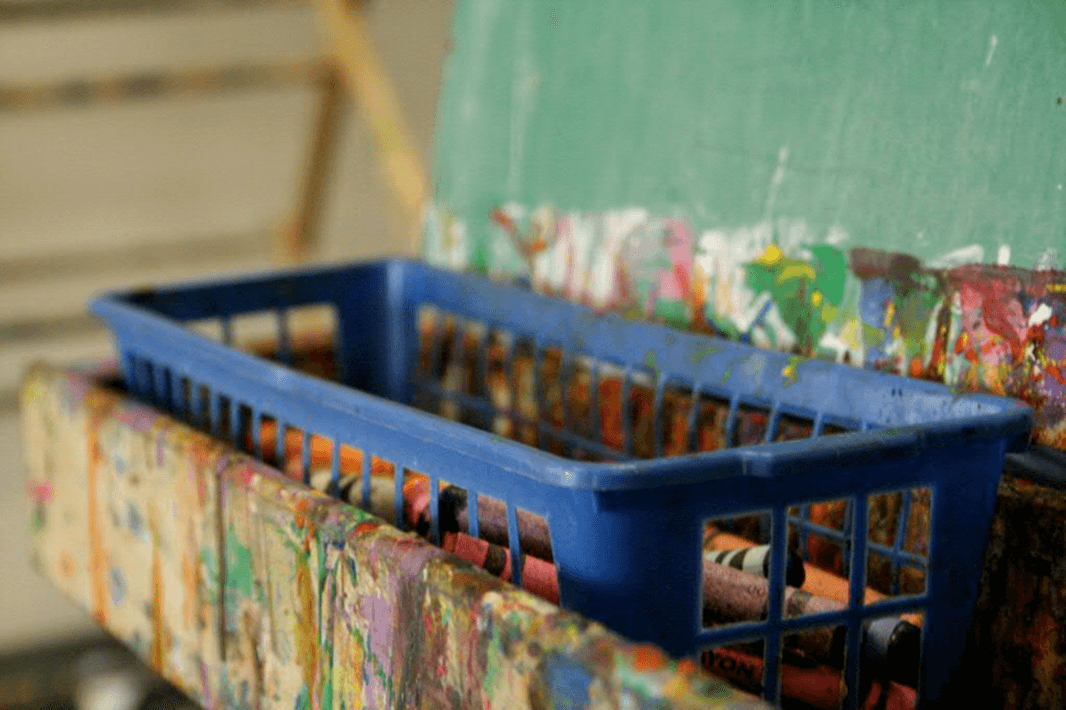
Play can be messy business, but it’s the best way for children to explore the world around them. When children are given free rein to be creative, you can be sure that they’ll end up wet, muddy, dirty, sandy and just plain messy. That’s how it should be. Children are happiest when throwing themselves wholeheartedly into a new challenge, with little concern for grass stains on their trousers or paint on their faces.
Sometimes, it’s hard not to get hung up on our mud-splattered children and their messy clothes at the end of a busy pre-school day. However, sensory play and messy play are vital life experiences for children. By trying to avoid them, we’re depriving our children of valuable modes of learning and discovery. For any parents worried about the mess associated with taking part in messy play activities at home, we’ve put together a list of tips and tricks to facilitate easy clean-up and still guarantee lots of fun for your children!

-
Establish boundaries
When doing messy play inside, you should designate a section of your house to limit the activity to. Put down an old mat or even a shower curtain to protect your floors and clearly mark out the messy play area for your children. Be clear that bodies and supplies must remain on the mat until all of the children involved in the activity have finished what they’re doing.
-
Teach children to clean up after themselves
With some help, even toddlers are able to clean their own paint brushes, wipe down surfaces and put their supplies away after painting. Children may need some reminders to do this, but it’s the best way to get them to start practicing good habits. If there’s a spillage during play, they should have the independence to quickly grab a towel to wipe it up and then get back to what they’re doing.

-
Have a clean-up plan ready
While your children are taking part in a messy play activity, you should be sure to have a towel (or two) at hand and some wet wipes to deal with spills and wipe faces as needed. Children may also need their hands wiping mid play, and this will prevent them from wiping them on furniture and clothes. You should try not to leave the area once messy play has started.
When they are done playing, help them to carefully remove their clothes so as to avoid spreading the mess. Wring out clothes to prevent any paint from dripping and wash their hands straight away. You should also remove all physical materials from reach once the messy play has come to an end. Toddlers are constantly driven to touch the objects around them and you don’t want to leave any temptations in their way.
-
Choose supplies wisely
Invest in a small handheld vacuum or a Dustbuster – it’s the quickest way to clean up small pieces such as sequins and scattered rice grains while children are still playing. Even if the messy play is taking place on a mat, spills are inevitable here and there. It’s convenient not to have to drag out a large vacuum every time this happens. Wet wipes, sponges and even old dish cloths are great for wiping children’s hands during play. Make sure that you keep harsh cleaning products out of reach from little ones and that you’re using non-toxic paints and glues.
-
Take messy play outside
If the thought of dough, goo and slime inside your house stresses you out, then take it outside! Messy play should be fun and not stressful. When the weather doesn’t permit outdoor play, you could get creative and conduct the activities in an empty bathtub or on a tiled kitchen floor. This will keep the mess contained and cleaning up will simply be a matter of turning on a tap or mopping the area.
So now you know that it is possible to facilitate messy play at home, and still keep your interiors intact! Here at Garden Play, we love all things messy and we want children to get the very best from their play time. We hope that these steps have inspired you to get stuck in and embrace the delightful chaos of messy play.



